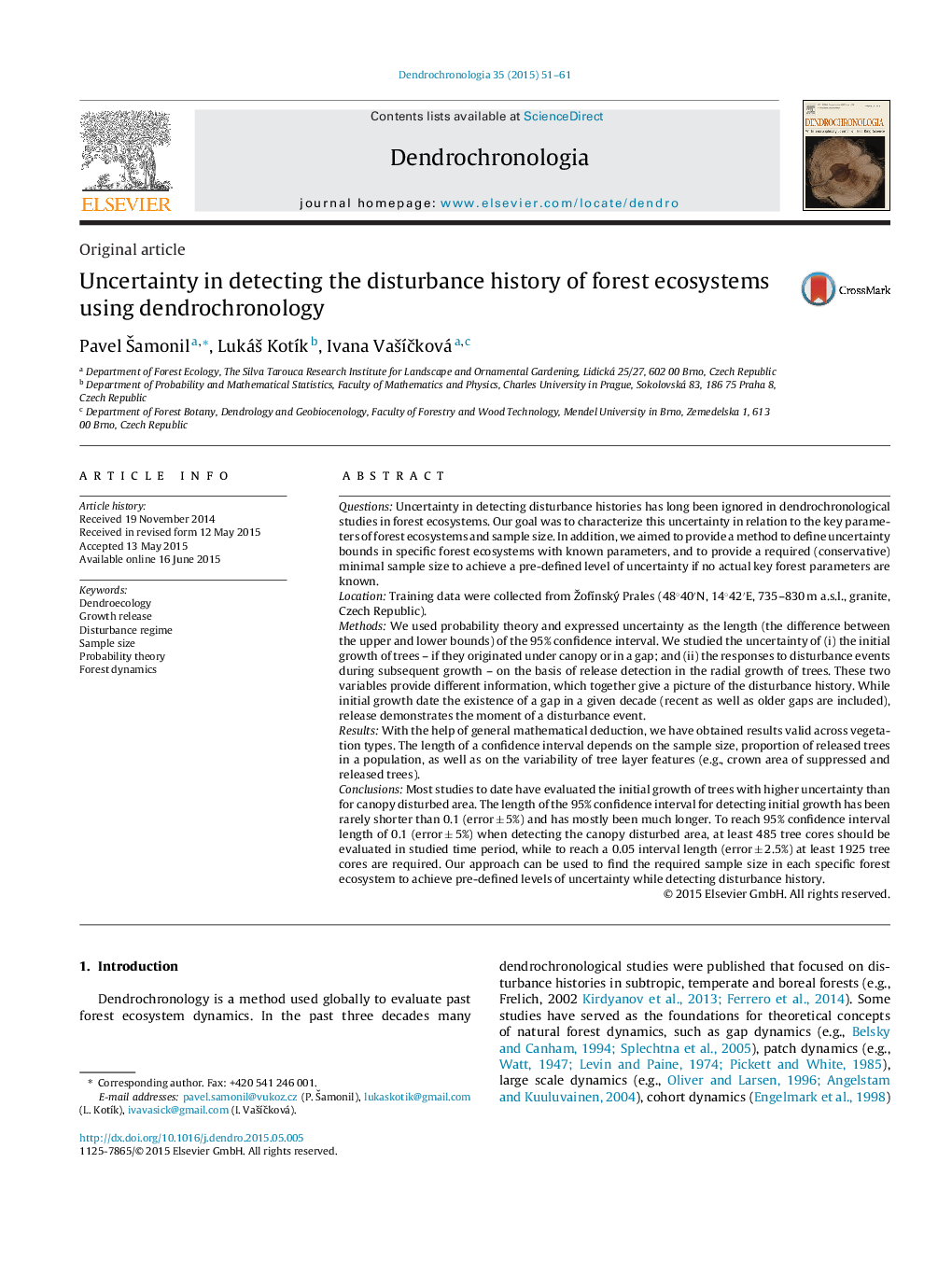| کد مقاله | کد نشریه | سال انتشار | مقاله انگلیسی | نسخه تمام متن |
|---|---|---|---|---|
| 85577 | 159099 | 2015 | 11 صفحه PDF | دانلود رایگان |
• The accuracy of detecting disturbance history was strongly dependent on sample size.
• A required sample size in specific forests can be calculated based on our approach.
• We recommend (conservative) minimal sample sizes if forest parameters are unknown.
• Our approach allows quantifying uncertainty for sample sizes used in former studies.
• Our approach is applicable across different forest ecosystems or types.
QuestionsUncertainty in detecting disturbance histories has long been ignored in dendrochronological studies in forest ecosystems. Our goal was to characterize this uncertainty in relation to the key parameters of forest ecosystems and sample size. In addition, we aimed to provide a method to define uncertainty bounds in specific forest ecosystems with known parameters, and to provide a required (conservative) minimal sample size to achieve a pre-defined level of uncertainty if no actual key forest parameters are known.LocationTraining data were collected from Žofínský Prales (48°40′N, 14°42′E, 735–830 m a.s.l., granite, Czech Republic).MethodsWe used probability theory and expressed uncertainty as the length (the difference between the upper and lower bounds) of the 95% confidence interval. We studied the uncertainty of (i) the initial growth of trees – if they originated under canopy or in a gap; and (ii) the responses to disturbance events during subsequent growth – on the basis of release detection in the radial growth of trees. These two variables provide different information, which together give a picture of the disturbance history. While initial growth date the existence of a gap in a given decade (recent as well as older gaps are included), release demonstrates the moment of a disturbance event.ResultsWith the help of general mathematical deduction, we have obtained results valid across vegetation types. The length of a confidence interval depends on the sample size, proportion of released trees in a population, as well as on the variability of tree layer features (e.g., crown area of suppressed and released trees).ConclusionsMost studies to date have evaluated the initial growth of trees with higher uncertainty than for canopy disturbed area. The length of the 95% confidence interval for detecting initial growth has been rarely shorter than 0.1 (error ± 5%) and has mostly been much longer. To reach 95% confidence interval length of 0.1 (error ± 5%) when detecting the canopy disturbed area, at least 485 tree cores should be evaluated in studied time period, while to reach a 0.05 interval length (error ± 2.5%) at least 1925 tree cores are required. Our approach can be used to find the required sample size in each specific forest ecosystem to achieve pre-defined levels of uncertainty while detecting disturbance history.
Figure optionsDownload as PowerPoint slide
Journal: Dendrochronologia - Volume 35, October 2015, Pages 51–61
